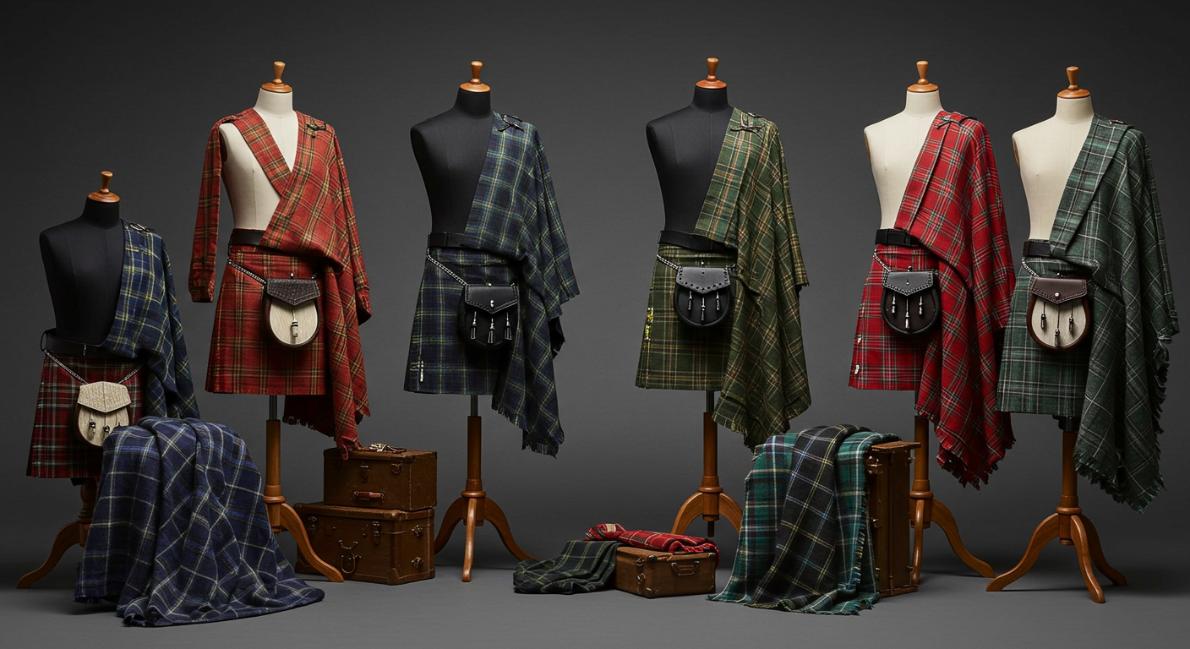The History Behind Tartan Kilts for Women: A Deep Dive into Scottish Traditions

Tartan kilts have long been a defining symbol of Scottish heritage and identity. Traditionally associated with men and the clans they represented, kilts have become a significant part of women's fashion. Today, tartan kilts for women blend history, culture, and modern style, making them both a traditional and contemporary wardrobe staple. This article explores the history of tartan kilt women's, their cultural importance, and how they have transformed over the centuries.
Origins of Tartan and Kilts in Scotland
Tartan patterns date back centuries, with the earliest recorded instances appearing in Scottish Highland culture. These patterns, also known as "setts," were used to differentiate between clans, serving as identifiers that symbolized family lineage and regional heritage. Each clan had its distinct tartan, woven using natural dyes from plants, mosses, and berries. The Scottish kilt, however, emerged in the 16th century as a functional garment worn by Highland men, providing flexibility and durability for life in rugged terrain.
For centuries, women in Scotland wore dresses and skirts made from tartan fabric, but they did not wear kilts like men. Instead, they draped tartan shawls and arisaids (tartan wrap) as part of their traditional dress. These garments were often worn over long skirts, reflecting a more modest and practical approach to incorporating tartan into women's attire.
The Role of Women in Traditional Scottish Dress
Unlike men, who commonly wore kilts, Scottish women in the 17th and 18th centuries typically wore tartan in sashes, skirts, and shawls. The arisaid was one of the most recognizable tartan garments women wore, serving as a full-length plaid cloak often secured with a brooch at the shoulder.
During this time, women were responsible for weaving tartan, which was crucial in maintaining clan traditions. The intricate process of hand-weaving tartan fabric required great skill and knowledge passed down through generations. Although women did not wear kilts in battle or formal gatherings, they played a vital role in preserving the legacy of tartan craftsmanship.
The Shift: Women and Tartan Kilts in the 19th and 20th Century
The late 19th and early 20th centuries saw a transformation in women's fashion, and tartan kilts for women gradually became a part of women's wardrobes. Queen Victoria played a significant role in popularizing tartan, as she embraced Scottish culture and frequently dressed her family in tartan attire while staying at Balmoral Castle.
By the early 20th century, women began wearing tartan skirts and adapted kilts, particularly as school uniforms and sportswear. Scottish dancing costumes for women also incorporated kilt-like pleated skirts, bringing the structured style of the traditional kilt into women's fashion. This transition reflected changing societal norms, allowing women more freedom in dress and movement.
During World War II, tartan kilts symbolized resilience and national pride, as women donned practical, structured skirts influenced by traditional kilt designs. It marked a shift toward functional yet fashionable tartan garments for women, blending heritage with evolving fashion trends.
The Revival of Women's Tartan Kilts in Modern Fashion
The late 20th century saw the resurgence of tartan kilts in women's fashion, mainly influenced by cultural movements and high fashion. The punk movement of the 1970s embraced tartan as a rebellious statement, with designers like Vivienne Westwood incorporating tartan kilts into bold, alternative fashion.
Beyond subcultures, the mainstream fashion industry also embraced tartan, leading to the kilt's widespread acceptance as an everyday garment for women. Today, tartan kilts for ladies and for mens are worn casually and formally, with modern designers blending traditional aesthetics with contemporary cuts and fabrics.
Symbolism and Cultural Importance of Women's Tartan Kilts
Tartan kilts hold significant cultural meaning, symbolizing Scottish pride and heritage. Different tartan patterns still represent various clans, families, and historical affiliations, keeping the legacy alive. In modern times, tartan kilts for women have also become a representation of empowerment and individuality, worn in settings that range from traditional Scottish gatherings to high-fashion runways.
Beyond personal expression, tartan kilts play a role in ceremonial and festive events, such as Highland games, Scottish weddings, and cultural festivals. Women can now wear kilts in these settings, reinforcing the idea that tartan symbolizes inclusion and national pride rather than a gender-specific tradition.
Tartan Kilts in Women's Formal and Everyday Wear
Modern adaptations of tartan kilts allow women to incorporate them into various aspects of their wardrobes:
- Casual Wear: Mini or knee-length tartan kilts paired with sweaters, blouses, or jackets make for a chic, everyday look.
- Business Attire: You can pair tailored tartan kilts in muted tones with blazers for a professional and elegant look.
- Formal Occasions: Long tartan kilts are worn with dress shirts, blouses, or eveningwear accessories to maintain a sophisticated aesthetic.
- Traditional Gatherings: Women wear tartan kilts to Highland games, Scottish dances, and weddings, embracing cultural authenticity.
The ability to dress up or down a tartan kilt makes it one of the most versatile heritage garments in contemporary fashion.
The Future of Women's Tartan Kilts
As sustainability and ethical fashion gain traction, designers use more eco-friendly materials and processes to produce tartan kilts. Many now prioritize slow fashion, crafting kilts with quality and longevity instead of mass production. This shift towards sustainable tartan kilts ensures that the garment remains relevant for future generations.
Additionally, global fashion trends continue to embrace tartan, with designers blending Scottish tradition with modern styling. Tartan kilts for women will likely continue to evolve, offering even more variety in fabric choices, cuts, and customization options.
Conclusion
The history of tartan kilts for women is a rich and evolving journey that bridges tradition with modernity. While worn initially as arisaids and shawls, tartan has become integral to women's fashion, reflecting Scottish pride, cultural heritage, and contemporary style. As tartan kilts continue to gain popularity worldwide, they serve as a timeless symbol of history and personal expression.
Whether worn at cultural events, formal occasions, or as an everyday fashion statement, tartan kilts for women will always carry the legacy of Scottish traditions into the future. Embracing tartan is more than just a fashion choice—it celebrates heritage, identity, and timeless style.


